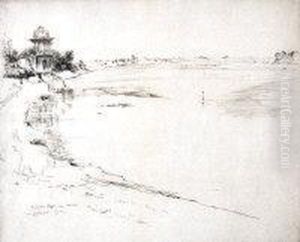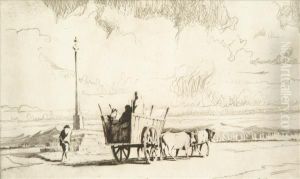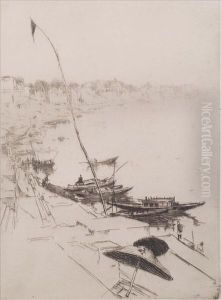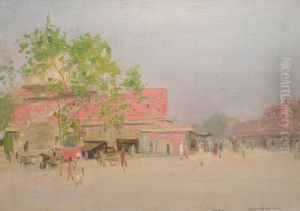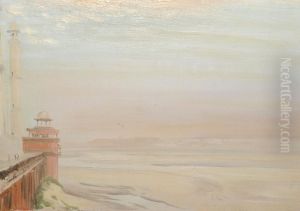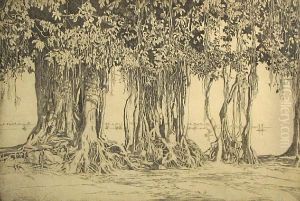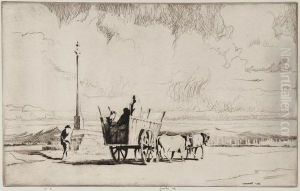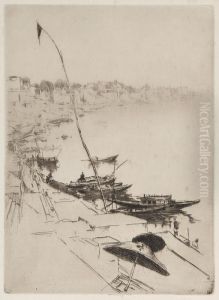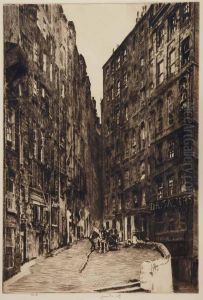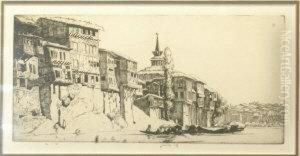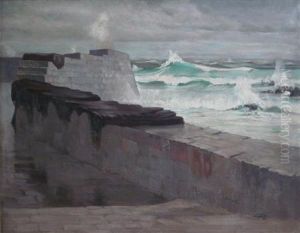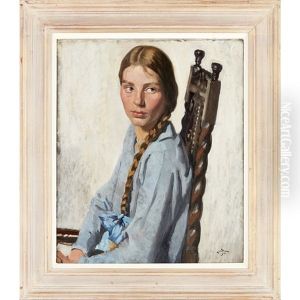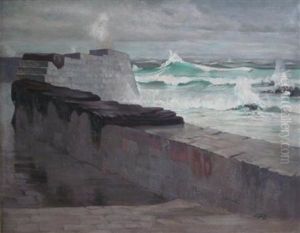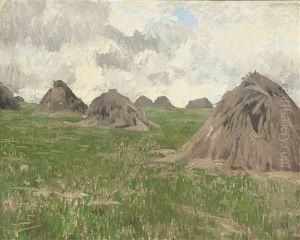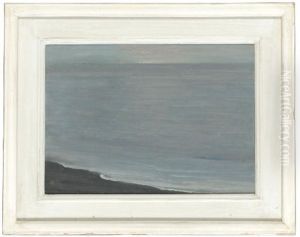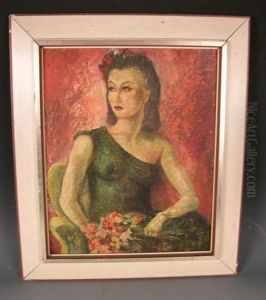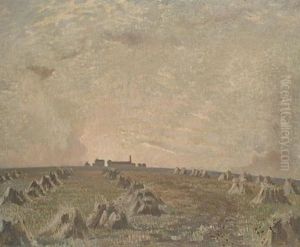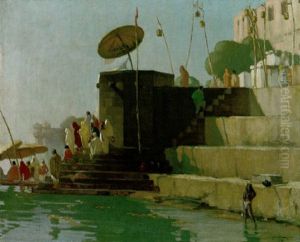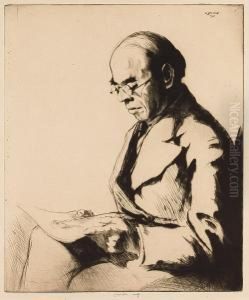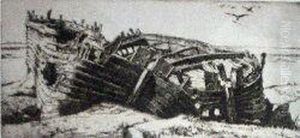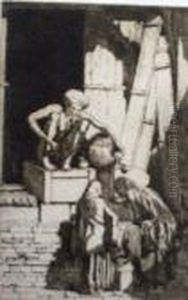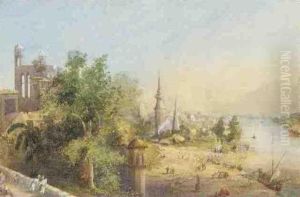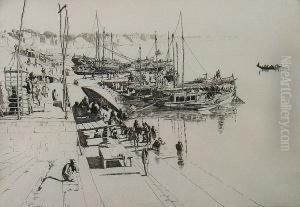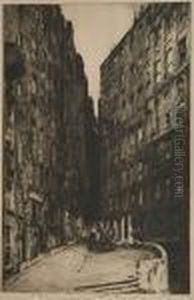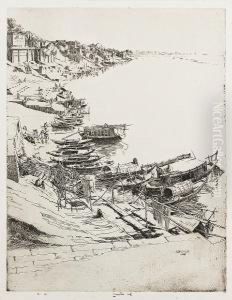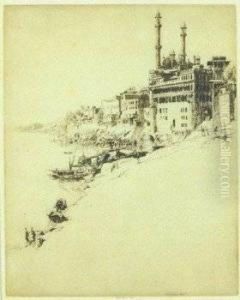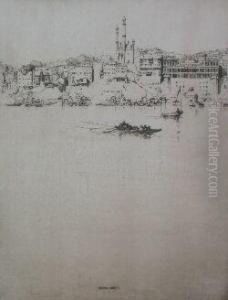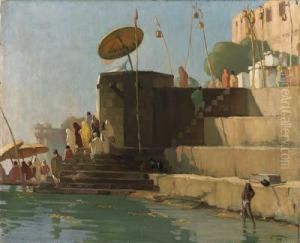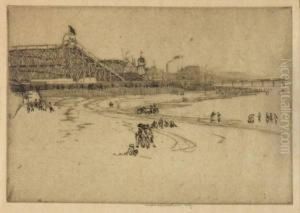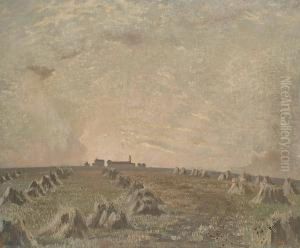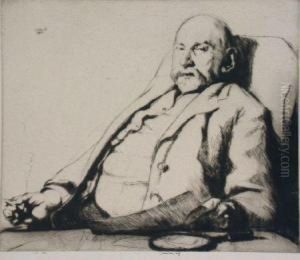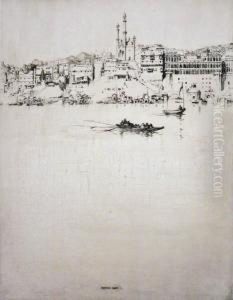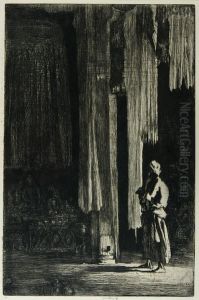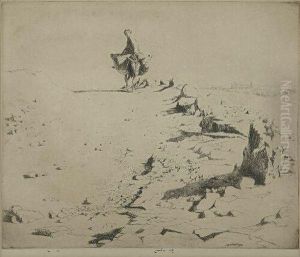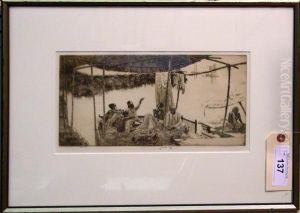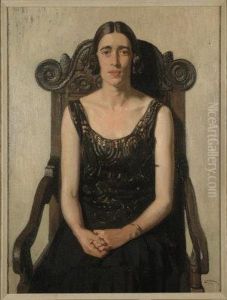Ernest S. Lumsden Paintings
Ernest Stephen Lumsden was a significant figure in the world of British printmaking and art, known especially for his etchings. Born on March 22, 1883, in London, England, Lumsden developed a keen interest in art at an early age. His artistic journey began at the Reading School of Art before he moved to the Edinburgh College of Art in Scotland to continue his education. Lumsden was not only a talented artist but also an avid traveler, which greatly influenced his work throughout his career.
Lumsden's travels took him across Europe and Asia, which included an extensive tour of India. The impressions and experiences he gathered during his journeys played a crucial role in shaping his artistic vision. He captured the essence of the diverse landscapes and cultures he encountered through his etchings, which are characterized by meticulous detail and a masterful use of line.
In 1906, Lumsden married fellow artist Mabel Royds, who was also an accomplished printmaker and painter. The couple shared a passion for art and often worked together on various projects. Lumsden's reputation as an etcher grew over time, and he became a respected member of the Royal Society of Painter-Etchers and Engravers in 1907, contributing to the promotion and development of the art of etching.
During World War I, Lumsden served in the Royal Engineers, but he returned to his artistic pursuits after the war. His post-war period was marked by a prolific output of etchings, many of which depicted scenes from his travels, as well as landscapes and cityscapes of Scotland. Lumsden's work was widely exhibited and collected, and he authored a book titled 'The Art of Etching,' published in 1924, which remains an important resource on the subject.
Lumsden's contribution to art education was also notable. He taught at the Edinburgh College of Art, where he influenced a generation of young artists. His teaching emphasized the importance of observation and the development of individual style, which was evident in his own work.
Ernest Stephen Lumsden passed away on September 28, 1948, in Edinburgh, Scotland. His legacy lives on through his etchings, which are held in various collections around the world, including the British Museum and the National Galleries of Scotland. Lumsden's dedication to his craft and his influence on the art of etching make him a significant figure in the history of British art.
